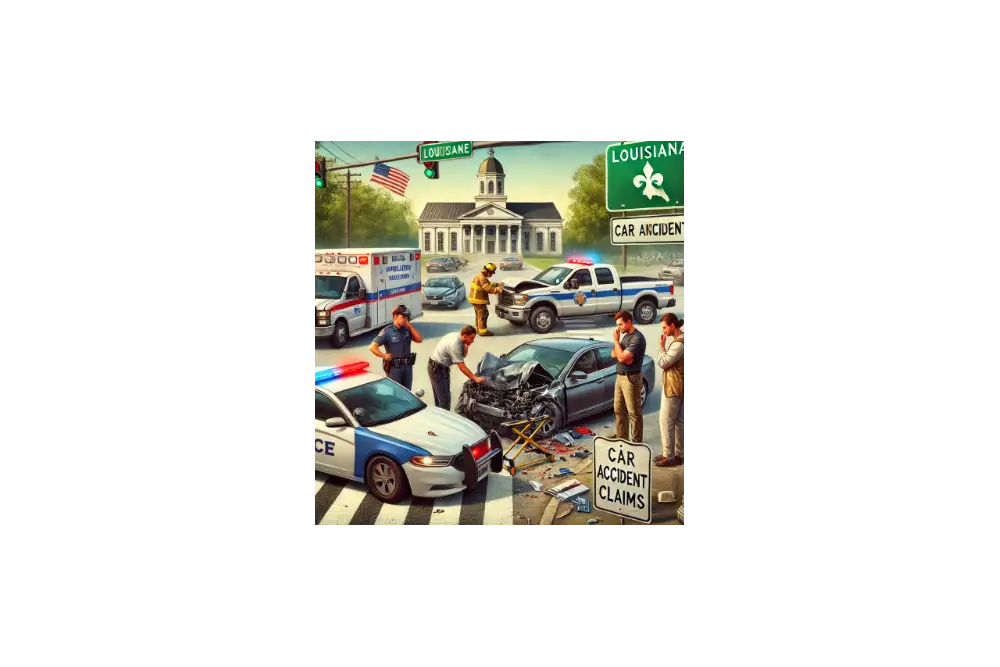Imagine the thrill of jumping out of a plane, the rush of wind, and then… something goes wrong. Your parachute doesn’t open properly, or you have a hard landing. Parachute accidents, while not everyday occurrences, can happen, and they can lead to severe injuries.
If you or someone you know has been hurt in a parachute accident, you’re probably wondering who is responsible. It’s a complex question, and that’s what we’re going to explore in this blog post.
At Bart Bernard Injury Lawyers, we’ve been helping people in Louisiana get justice for their injuries for over 30 years. We understand that accidents can change lives in an instant, and we’re here to be with you every step of the way.
The Risks of Parachuting
Parachuting, including skydiving, is an exciting sport, but it’s important to acknowledge that it carries inherent risks.
- According to the United States Parachute Association (USPA), in 2022, there were 3.01 student fatalities per 100,000 student jumps. While this number might seem small, it’s a reminder that accidents can happen, especially for beginners.
- The USPA also reports that most skydiving fatalities are due to errors made by experienced jumpers. This shows that even experienced skydivers are not immune to accidents.
These statistics highlight the importance of safety precautions and understanding the potential for things to go wrong.
Common Causes of Parachute Accidents
Parachute accidents can happen for various reasons. Some of the most common causes include:
- Equipment Failure: This can involve problems with the main parachute, the reserve parachute, or the automatic activation device (AAD).
- Pilot Error: This includes mistakes made by the skydiver, such as improper packing of the parachute, incorrect body position, or misjudging altitude.
- Weather Conditions: Strong winds, turbulence, or other weather conditions can make parachuting dangerous.
- Mid-Air Collisions: Collisions with other skydivers can occur, especially in crowded drop zones.
- Landing Errors: Improper landing techniques can lead to injuries.
Determining Liability: Who Is Responsible?
Figuring out who is responsible for a parachute accident is a key part of any legal case. Here are some of the parties who might be held liable:
- The Skydiver: If the skydiver’s own negligence caused the accident, they may be responsible for their own injuries. This could include things like:
- Not following instructions
- Performing maneuvers beyond their skill level
- Ignoring safety rules
- The Parachute Rigger: The person who packs the parachute. If the parachute was packed incorrectly, leading to a malfunction, the rigger could be held liable.
- The Drop Zone Operator: The company that runs the skydiving center. They may be liable if they:
- Failed to provide adequate training
- Used unsafe equipment
- Did not maintain the aircraft properly
- Allowed jumps in unsafe weather conditions
- The Parachute Manufacturer: If the parachute was defective, the manufacturer could be held liable.
- The Aircraft Owner or Operator: If the aircraft had mechanical problems that contributed to the accident, the owner or operator might be responsible.

The Role of Negligence in Parachute Accident Cases
In most personal injury cases, including parachute accidents, proving negligence is key. Negligence means that someone failed to act with reasonable care, and that failure caused harm to another person.
To prove negligence, you generally need to show:
- Duty of Care: The responsible party (like the drop zone operator) had a duty to keep you safe.
- Breach of Duty: The responsible party failed to meet that duty of care.
- Causation: Their failure directly caused your injuries.
- Damages: You suffered actual losses, like medical bills and lost wages.
Statistics: Understanding the Risks
- Skydiving Injuries: While skydiving is generally considered safe with proper precautions, injuries do occur. The USPA reports that in 2022, there were 20 fatal skydiving accidents in the U.S.
- AAD Saves Lives: Automatic activation devices (AADs) have significantly reduced skydiving fatalities. AADs automatically deploy the reserve parachute if the skydiver doesn’t do so themselves.
- Experienced Jumpers: Interestingly, the USPA data shows that most skydiving fatalities involve experienced jumpers, highlighting the importance of ongoing safety practices even for seasoned skydivers.
- BASE Jumping: BASE jumping, which involves jumping from fixed objects like buildings, antennas, spans (bridges), and earth (cliffs), is significantly more dangerous than skydiving from an airplane. (Source: Cite a study on BASE jumping fatality rates if possible)
How a Personal Injury Lawyer Can Help
If you’ve been injured in a parachute accident, a personal injury lawyer can help you:
- Investigate the accident: Figure out what caused the accident and who is responsible.
- Gather evidence: Collect important documents like accident reports, equipment maintenance records, and medical records.
- Negotiate with insurance companies: Deal with insurance adjusters and fight for a fair settlement.
- File a lawsuit: If necessary, represent you in court.
- Get you compensation: Help you recover money for your medical bills, lost wages, pain and suffering, and other losses.
Bart Bernard Injury Lawyers: Your Louisiana Personal Injury Advocates
At Bart Bernard Injury Lawyers, we have a proven track record of success in handling a variety of personal injury cases, including those involving aviation and recreational activities.
- 30 Years of Experience: We’ve been helping people in Louisiana for over 30 years, and we have the knowledge to handle complex cases.
- Compassionate Representation: We understand that this is a difficult time for you, and we’re here to support you.
- No Fee Unless We Win: You don’t pay us any attorney fees unless we get you money for your case.
Don’t Jump to Conclusions: Get Legal Help
If you’ve been injured in a parachute accident, it’s important to understand your rights and options. Contact Bart Bernard Injury Lawyers today for a free consultation. We’ll listen to your story, answer your questions, and help you determine the best course of action.
Remember, you don’t have to navigate this difficult situation alone. We’re here to help you every step of the way.





